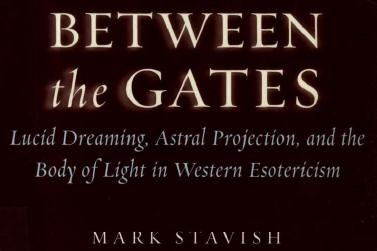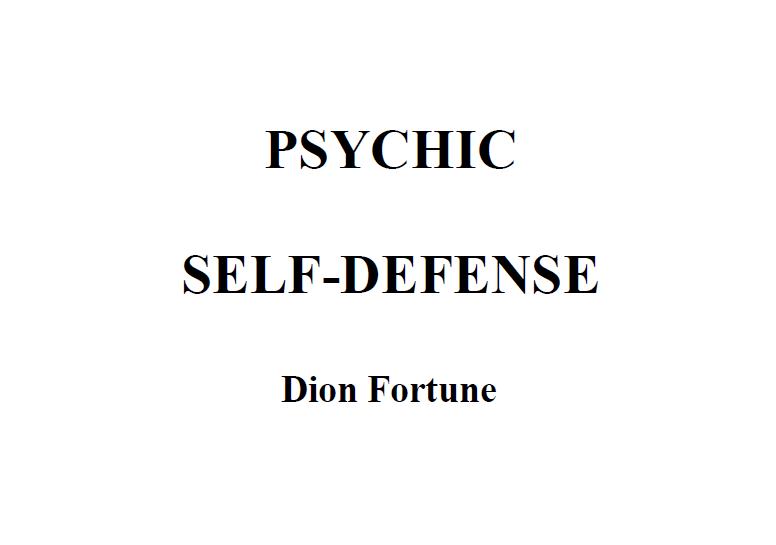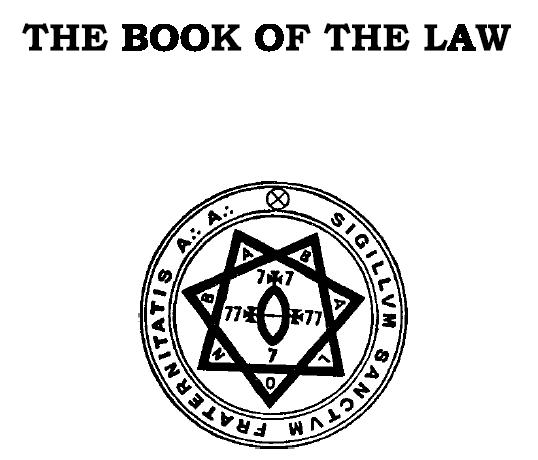
|
BookLaw-complete.pdf Size : 241.865 Kb Type : pdf |

|
the faerie faith.pdf Size : 135.842 Kb Type : pdf |

|
the power of silence.pdf Size : 1892.399 Kb Type : pdf |

|
Conway,_D._J._-_Celtic_Magic.pdf Size : 4859.007 Kb Type : pdf |

|
Patricia_Telesco_-_An_Enchanted_Life.pdf Size : 8766.727 Kb Type : pdf |

|
Lady_Sabrina_-_The_Witch's_Master_Grimoire.pdf Size : 3208.741 Kb Type : pdf |

|
aleister_crowley-book_of_lies.pdf Size : 308.662 Kb Type : pdf |

|
wicca last will and testament as addendum.pdf Size : 71.718 Kb Type : pdf |

|
www.pdf Size : 0 Kb Type : pdf |

|
odin_brotherhood_book.pdf Size : 0.522 Kb Type : pdf |

|
the voice of the silence.pdf Size : 820.26 Kb Type : pdf |

|
McGiolla_Cathain_-_Secret_Magic_Spells_Of_The_Romany_Gypsies_id1017896083_size2218.pdf Size : 2166.469 Kb Type : pdf |

|
How-to-Read-Tarot-eBook.pdf Size : 165.599 Kb Type : pdf |
I-CHING

|
Yi.pdf Size : 1363.45 Kb Type : pdf |
History of Odinism
1386 CE: Lithuania, the last pagan stronghold in Europe is officially converted, but paganism lingers
1421 CE: Three children, acting on instructions from their murdered mother, establish the Odin Brotherhood.
1611 CE: Johannes Bureus of Sweden, adviser to King Gustavus Adolphus, begins drawing and interpreting Sweden’s runestones. Many have been lost and are only known to us through his drawings.
1622 CE: Ole Worm of Denmark collects reports on runestones and other antique monuments of Denmark and the Northern countries. Bureus and Worm may be thought of as the founders of modern runic studies.
1642 CE: Bishop Brynjólfur gifts the “Codex Regius” to King Frederick III. Afterwards, the Eddic poems began to be published and more widely known.
1790 CE: The Romantic movement inspired Germans and Scandinavians seeking their national identity in their own origins and resulted in much of the early literature being translated.
1818 CE: The Brothers Grimm, Jacob and Wilhelm, publish their collection of fairy tales.
1844 CE: Jacob Grimm publishes Teutonic Mythology , a study of medieval Norse literature’s relation to Germanic folklore.
1845 CE: Charles W. Heckethorn describes an Odinist mystery cult, in his Secret Societies of All Ages and Countries
1862 CE:P Guido von List visited the crypt of St. Stephen’s Cathedral (the location of a former pagan shrine) and swore an oath to build a temple to Wotan.
1874 CE: The King of Denmark grants the people of Iceland freedom of religion.
1875 CE: The cathedral of Reykjavik, Iceland is the site of the first public Ásatrú Blót since 1000 CE.
1907 CE: German painter and writer Ludwig Fahrenkrog founds the Germanic Glaubens -Gemeinschaft (GGG), a German Heathen group.
1933-1945 CE: In the Nazi era, Heathens face persecution by both the Axis and Allies. Their groups are forbidden to meet and some leaders are jailed.
1957 CE: In Australia, A. Rud Mills publishes a series of books on the elder religion.
1969 CE: Else Christensen establishes the Odinist Fellowship.
1972 CE: Sveinbjörn Beinteinsson founded the Ásatrúarfélagið of Iceland. In 1973, Ásatrú is accepted as one of the official religions of Iceland.
1973 CE: The Odinic Rite was also moving to gain acceptance in England.
1973 CE: Stephen McNallen founded the Ásatrú Free Assembly of America, establishing Ásatrú solidly as a re-created Heathen religion.
1982CE: Certain members of the Odin Brotherhood decide to reveal some of the secrets of the movement.
1987CE: The Asatru Alliance is established by Michael J. Murray (Valgard Murray).
1992 CE: The Odin Brotherhood, a non-fiction book by Mark Mirabello, is published.
1994 CE: The Comunità Odinista is established in Italy.
2004 CE: David Lane, a Wotanist, or extreme folkish pagan, writes KD Rebel, a novella describing radical Odinists fighting a guerrilla insurgency against a corrupt modern society.
2009 CE: Asatru and Odinist groups are now found throughout Europe, North America, South America, and Australia/New Zealand
WHAT IS ODINISM?
Odinism is the name we give to the original, indigenous form of heathen religion practised by our forefathers, the Angles, Saxons and Jutes, and by the related Teutonic peoples of the Continent. It is, accordingly, the ancestral, native religion of the English people, and, as such, our very own spiritual heritage. Odinism is an ancient religion whose origins are lost in the mists of time, but it has been restored in recent decades by those who believe it offers a solution to modern Man's spiritual crisis.
Odin
(also Woden or Wotan in Anglo-Saxon myth)
Odin is the chief god of Germanic mythology. Son of Bor and Bestla, Odin was risen to favor mostly by the Vikings, and became known as the supreme god in the eighth and ninth centuries. The Vikings admired Odin's love for the battle, as he was known as the "father of the slain". Odin's prominence demonstrates the importance of warfare to Germanic traditions.
Odin loved to cause conflicts and shifts of power. He once aided Harald, a Danish King, instructing him in tactics and granting him victories for years. In the king's final battle, however, Odin took the place of Harald's charioteer and drove the king to his demise.
Although Odin embodied deceit, violence and war, he also embodied many admirable qualities. He was the most knowledgeable god, with a great love for wisdom. He would willingly sacrifice himself for it.
With the threat of Ragnarok, the death of all gods, Odin built the Valhalla, a great hall of the "heroic dead". Odin would then gather heroes and warriors who were slain in battle, and bring them to Valhalla so they would fight alongside the gods on the Vigrid plain, in an attempt to strengthen and save the gods in the final battle against the frost giants at the time of Ragnarok.
Odin was killed by a wolf, Fenrir, a monstrous offspring of the fire god Loki and the frost giantess Angrboda.
When the Romans arrived in Germanic territory, they assumed that Odin was their messenger god, Mercury.
WHAT KIND OF RELIGION IS ODINISM?
WHAT ARE ITS BELIEFS?
Odinism is a life-affirming religion. Odinists value and esteem everything that sustains, promotes, enhances and enriches life. Odinists do not see our life on Earth as merely being a preparation for a life hereafter. We see it as an end in itself, as something positive, good and hallowed. We rejoice in and celebrate all that is wonderful in the world around us: the fruitfulness of Nature, the changing seasons, the comforts of family and home, human creativity, and our personal and collective achievements. Odinists do not indulge in fasting and penitence; rather, we worship the gods in our feasting and merry-making.
Balder
by The Troth
Son of Odin and Frigga, he is shown in the Prose Edda as a rather pallid heathen imitation of Christ, but other sources, notably the Danish chronicler Saxo Grammaticus, portray him as a doughty and aggressive warrior. Today we often think of him as the shining young hero who embodies the hope of an age. After his death was foretold, Frigga got everything in the Nine Worlds to swear not to harm him, but neglected the mistletoe, which she thought was too small and weak to harm him. Making a game of his invulnerability, the gods cast weapons at him; meanwhile, Loki made an arrow of mistletoe and put it in the hand of Balder's blind brother Hod, aiming it for him. After Balder's death, Frigga sent a messenger to Hel to ask for him back. Hel answered that if everything would weep for Balder, she would return him. Only one old hag, who some think was Loki and others identify as Hel herself, refused to shed a tear; and so Balder stays in Hel's realm yet. After Ragnarok, he and Hod will come back to inherit Odin's seat. Balder is seldom called on, but is remembered as the hidden seed of the new world to come after the final battle. Old Norse Baldr, Old English Bealdor.
Rites and practices
The primary deities of Germanic Neopaganism are those of Anglo-Saxon religion and of Norse Mythology (see list of Norse gods). Germanic Neopaganism also has a component of ancestor worship or veneration. In the simplest form, the gods are viewed as distant ancestors or progenitors who are honoured and revered, while in the adherent's personal practices, direct ancestors (referred to sometimes as Dis) are often praised and honoured during the rituals of sumbel and blót. Animism or land veneration is most evident in the rituals dedicated to the elves and wights.
Blót
Blót is the historical Norse term for sacrifice or ritual slaughter. In Germanic Neopaganism, blóts are often celebrated outdoors in nature, the celebrants sometimes clad in home-made Medieval Scandinavian attire. A blót may be highly formalized, but the underlying intent resembles inviting and having an honored guest or family member in for dinner. Food and drink may be offered. Most of this will be consumed by the participants, and some of the drink will be poured out onto the soil as a libation. Home-brewed mead as the "Germanic" drink par excellence is popular.[16][17]
Offerings during a blót usually involve mead or other alcohol, sometimes food, sometimes song or poetry, specially written for the occasion or for a particular deity, is delivered as an offering. The blót ritual may be based on historical example, scripted for the occasion or may be spontaneous. Certain Germanic Neopagan groups, most notably the Theodish, strictly adhere to historical formulaic ritual, while other groups may use modernized variants. Usual dress for a blót is whatever suits the seasons — many blóts are outdoors, sometimes at sacred sites. Some Germanic Neopagans, most notably the Theodish, wear clothing modeled on those of the Anglo-Saxon or Norse 'Viking' during ritual, while others eschew this practice.
Sumbel
Symbel (OE) and sumbel (ON) are terms for "feast, banquet, (social) gathering", occasionally used to refer to a special type of solemn drinking ritual attested in more or less comparable forms among various Germanic warrior elites. In such instances, symbel involved a formulaic ritual which was more solemn and serious than mere drinking or celebration. The primary elements of symbel are drinking ale or mead from a horn, speech making (which often included formulaic boasting and oaths), and gift giving.
According to the reconstruction by Bauschatz (1983), eating and feasting were specifically excluded from symbel, and no alcohol was set aside for the gods or other deities in the form of a sacrifice.[19]
The host of the symbel was called the symbelgifa. One of the officiants of symbel was the thyle (ON þulr), who challenged and questioned those who made boasts (gielp) or oaths (béot, bregofull), if necessary with taunts or mockery (flyting). Oaths said over the symbel-horn were seen as binding and affecting the luck and wyrd of all in attendance. The alcoholic drink was served by women or alekeepers (ealu bora "ale bearer"), the first round usually poured by the lady of the house.
The bragarfull "promise-cup" or bragafull "best cup" or "chieftain's cup" was in Norse culture a particular drinking from a cup or drinking horn on ceremonial occasions, often involving the swearing of oaths when the cup or horn was drunk by a chieftain or passed around and drunk by those assembled.
In American Ásatrú as developed by McNallen and Stine, the sumbel is a drinking-ritual in which a drinking horn full of mead or ale is passed around and a series of toasts are made, first to the Aesir, then to other supernatural beings, then to heroes or ancestors, and then to others. Participants may also make boasts of their own deeds, or oaths or promises of future actions. Words spoken during the sumbel are considered and consecrated, becoming part of the destiny of those assembled. The name sumbel (or symbel) is mainly derived from Anglo-Saxon sources. For this reason, the ritual is not know by this name among Icelandic Nordic pagans, who nevertheless practice a similar ritual as part of their blot.[20]
In Theodism or Anglo-Saxon neopaganism in particular, the symbel has a particularly high importance, considered "perhaps the highest rite"[21] or "amongst the most holy rites"[22] celebrated.
Seiðr
Seiðr and Spae are forms of "sorcery" or "witchcraft", the latter having aspects of prophecy and shamanism. Seid and spae are not common rituals, and are not engaged in by many adherents of Germanic Neopaganism. Usually seid or spae rituals are modeled after the ritual detailed in the Saga of Eric the Red: a seiðkona dressed in traditional garb will sit on a high-seat or platform and prophesy in a formulaic manner as women sing or chant galdr around her. In the UK, seidr relies less on formal ritual and more informal practices of healing (Blain, 2002b), protection, and for developing links with land and ancestors. It may be related — in past and present — to alterations of consciousness and negotiations with otherworld beings.
The berserkergangr may be described as a sort of religious ecstasy, associated with Odin, and thus a masculine variant of the 'effeminate' ecstasy of Seid.[18]
Frigga
by The Troth
('Well-Beloved, Spouse, Lady') Most revered of the Teutonic Goddesses. Wife and sister of Odin. Frigga is the patron goddess of the home and of the mysteries of the married woman. She is seen as Odin's match (and sometimes his better) in wisdom; she shares his high-seat, from which they look out over the worlds together. Frigga is especially concerned with keeping social order. She is called on for blessings when women are giving birth and for help in matters of traditional women's crafts (spinning, weaving, cooking, sewing) and the magics worked thereby. Frigga can also be called on by mothers who want to protect their children. In olden days, this was especially the case with sons going out to battle, for whom their mothers would weave or sew special protective items. She is also called Hlin (protectress).
Frigga is the mother of Balder, and is often thought of as still mourning for him. She is a seeress, who knows all fates, though she seldom speaks of them. Her hall is called Fensalir - "marsh-halls". She has a handmaiden called Fulla and a messenger named Gna. Despite the likeness of names and the similar relationship to Odin, Frigga should not be confused with Freya, who shares none of her essential traits. Her only departure from strict social behaviour is that during one of Odin's journeys away from Asgard, she is said to have taken his brothers Vili and Ve as husbands; however, this probably shows the queen-goddess as the embodiment of sovereignty. Her name is also not directly related to the English slang-word, though the two derive from the same original root ("love, pleasure").
History
Romanticist Germanic mysticism
The first modern attempt at revival of ancient Germanic religion took place in the 19th century during the late Romantic Period amidst a general resurgence of interest in traditional Germanic culture, in particular in connection with romantic nationalism in Scandinavia and the related Viking revival in Victorian era Britain. Germanic mysticism is an occultist current loosely inspired by "Germanic" topics, notably runes. It has its beginnings in the early 20th century (Guido von List's "Armanism", Karl Maria Wiligut's "Irminism" etc.)
The last traditional pagan sacrifices in Scandinavia, at Trollkyrka, appear to date to about this time.
Organized Germanic pagan or occult groups such as the Germanische Glaubens-Gemeinschaft emerged in Germany in the early 20th century. The connections of this movement to historical Germanic paganism are tenuous at best, with emphasis lying on the esoteric as taught by the likes of Julius Evola, Guido von List and Karl Maria Wiligut.
Nazi period and World War II
Several early members of the Nazi Party were part of the Thule Society, a study group for German antiquity. While it is postulated that occult elements played an important role in the formative phase of Nazism, and of the SS in particular, after his rise to power Adolf Hitler discouraged such pursuits. Point 24 of the National Socialist Program stated that the party endorsed "Positive Christianity."[23]
The eclectic German Faith Movement (Deutsche Glaubensbewegung), founded by the Sanskrit scholar Jakob Wilhelm Hauer, enjoyed a degree of popularity during the Nazi period.[24] Some Germanic mysticists were victimized by the Nazis: Friedrich Bernhard Marby spent 99 months in KZ Dachau, and Siegfried Adolf Kummer's fate is unknown.[25]
Several books published by the Nazi party including Die Gestaltung der Feste im Jahres- und Lebenslauf in der SS-Familie (The Celebrations in the Life of the SS Family) by Fritz Weitzel, as well as the SS Tante Friede illustrate how the National Socialists thought traditional Germanic Heathenry was primitive superstition which needed reworking to better serve the state. Celebrating the traditional festivals like Jul and Sommersonnenwende were encouraged and recast into veneration of the Nazi state and Führer.[26]
The appropriation of "Germanic antiquity" by the Nazis was at first regarded with skepticism and sarcasm by British Scandophiles. W. H. Auden in his Letters from Iceland (1936) makes fun of the idea of Iceland as an "Aryan vestige".[27] but with the outbreak of World War II, Nordic romanticism in Britain became too much associated with the enemy's ideology to remain palatable, to the point that J. R. R. Tolkien, an ardent Septentrionalist, in 1941 found himself moved to state that he had a "burning private grudge ... against that ruddy little ignoramus Adolf Hitler" for "ruining, perverting, misapplying, and making for ever accursed, that noble northern spirit, a supreme contribution to Europe, which I have ever loved, and tried to present in its true light."[28]
Second revival, 1960s to present
Another revival, this time based on folklore and historical research rather than on mysticist speculation, took place in the late 1960s and early 1970s. In Iceland, Ásatrúarfélagið, led by farmer Sveinbjörn Beinteinsson, was recognized as a religious organization by the Icelandic government in 1973. In USA, around the same period, Else Christensen began publishing "The Odinist" newsletter and Stephen McNallen began publishing a newsletter titled The Runestone. McNallen formed an organization called the Asatru Free Assembly, which was later renamed the Ásatrú Folk Assembly (AFA) [29]. The AFA fractured in 1987-88, resulting in the creation of the Ásatrú Alliance[30], headed by Valgard Murray, publisher of the "Vor Tru" newsletter. Around the same time, the Ring of (now simplyTroth The Troth) was founded by other former members of the AFA.[31].
In 1972 the spiritual descendants of Mills' Odinist movement in Australia obtained from the Attorney-General of the Commonwealth of Australia a written undertaking that open profession of Odinism in Australia would not be persecuted. The Odinic Rite of Australia subsequently obtained tax deductible status from the Australian Tax Office. The ATO accepts this as the definition of Odinism: "the continuation of ... the organic spiritual beliefs and religion of the indigenous peoples of northern Europe as embodied in the Edda and as they have found expression in the wisdom and in the historical experience of these peoples".
In 1976 Garman Lord formed the Witan Theod, the first Theodish group. Shortly thereafter, Ealdoraed Lord founded the Moody Hill Theod in Watertown, New York. The Angelseaxisce Ealdriht formed in 1996 and was founded by Swain Wodening and Winifred Hodge. Theodism now encompasses groups practicing tribal beliefs from Scandinavia and the Continent, in addition to following in the model set forth by the early Anglo Saxon peoples.
The Odinic Rite was established in England in 1972, and in the 1990s expanded to include chapters in Germany (1995)[32], Australia (1995) [33] and North America (1997) [34]. A Netherlandian section was added in (2006)[35].
In Germany, the Heidnische Gemeinschaft (HG) founded by Géza von Neményi in 1985. In 1991 the Germanische Glaubens-Gemeinschaft (GGG), led by von Neményi, split off from the HG. In 1997 the Nornirs Ætt was founded as part of the Rabenclan and in 2000 the Eldaring was founded. The Eldaring is affiliated with the US based Troth.
In Scandinavia, the Swedish Asatru Society formed in 1994, and in Norway the Åsatrufellesskapet Bifrost formed in 1996 and Foreningen Forn Sed formed in 1999. They have been recognized by the Norwegian government as a religious society, allowing them to perform "legally binding civil ceremonies" (i. e. marriages). In Denmark Forn Siðr also formed in 1999 (and recognized by the state in 2003[36] and in Sweden Nätverket Gimle formed in 2001, as an informal community for individual heathens. Nätverket Forn Sed formed in 2004, and has a network consisting of local groups (blotlag) from all over the Sweden.
In the UK, state recognition of Neopaganism occurred as a coincidence of the legal case Royal Mail group PLC versus Donald Holden in 2006. Holden, a member of the Odinist Fellowship, sued his former employer for unfair dismissal.[37]
The Fenrir Wolf
Fenrir was the eldest of three children between Loki and the giantess Angrboda. Fenrir took the form of a wolf while his younger brother Jormungand took the form of a serpent and his younger sister Hel was half alive and half dead. The gods feared them all and captured them in middle of the night from Angrboda's hall. The gods then brought the three monsters back to Asgard where they threw Jormungand into the ocean and Hel into Niflheim where she rules until Ragnarok. They kept Fenrir in Asgard so that they might keep an eye on him.
Fenrir grew so large and fierce that only Tyr was brave enough to feed him. After some time the gods decided to bind Fenrir, as killing was forbidden in Asgard. So they made a chain of iron links called Læding and challenged Fenrir to be bound by it to see if he was stronger than the chain. Fenrir took the challenge and broke the bonds with no problem.
The gods then quickly made another chain from larger links, larger than even anchor chains, and they called it Dromi. The gods then took it to Fenrir and challenged him to break that chain. He too broke it with no problem, for he had grown even stronger since his breaking of Læding. The gods where truly frightened after Fenrir broke Dromi that Odin sent Frey's servant Skirnir out into the nine worlds to find someone to make a chain strong enough to bind the giant wolf.
Skirnir then went to the land of the dwarfs in Svartalfheim where they made a silk rope called Gleipnir. Gleipnir was made from the sound a cat makes when it moves, a woman's beard, the roots of a mountain, the sinews of a bear, the breath of a fish and a birds spittle. That is why these things are very rare in the world today.
Skirnir then returned to Asgard with the silk rope and gave it to Odin, where he and a group of gods invited Fenrir to break it on the island of Lyngvi in middle of Lake Amsvartnir. Fenrir took the challenge but when he saw Gleipnir, he suspected that magic was involved and hesitated until Tyr offered to place his right hand into Fenrir's mouth. Fenrir was bound, but when he could not break the rope, he bit Tyr's hand off. The gods then took a chain called Gelgja and tied it to Gleipnir, then tied Gelgja to a boulder called Gjoll and drove Gjoll one mile into the earth. After that was done, they placed an even larger boulder called Thviti on top of Gjoll. The gods then gaged Fenrir with a sword, it's tip on the roof of Fenrir's mouth and the hilt on his lower jaw and that is where he will be until Ragnarok.
When Ragnarok comes, Fenrir's chain will break, and he will join his father, brother, sister and the giants in the mighty battle that will end the nine worlds. Fenrir and Odin will be the first to engage into battle, but in the end he will swallow Odin, killing the Allfather. Odin's son Vidar will then come forward to tear Fenrir apart avenging his father and killing the wolf son of Loki.
He was also called the Fenris Wolf.




